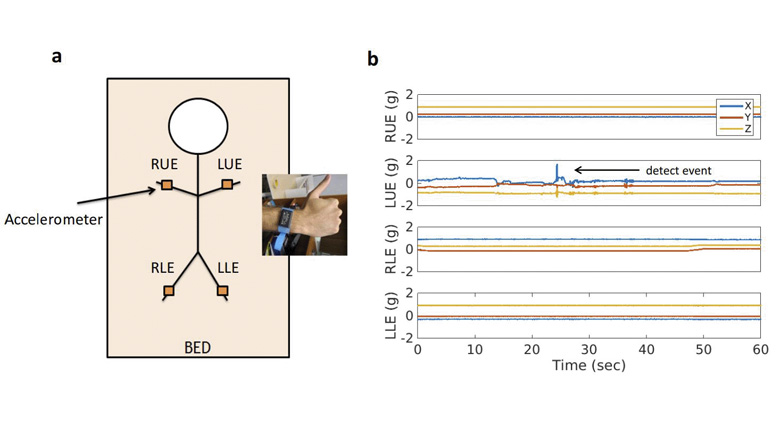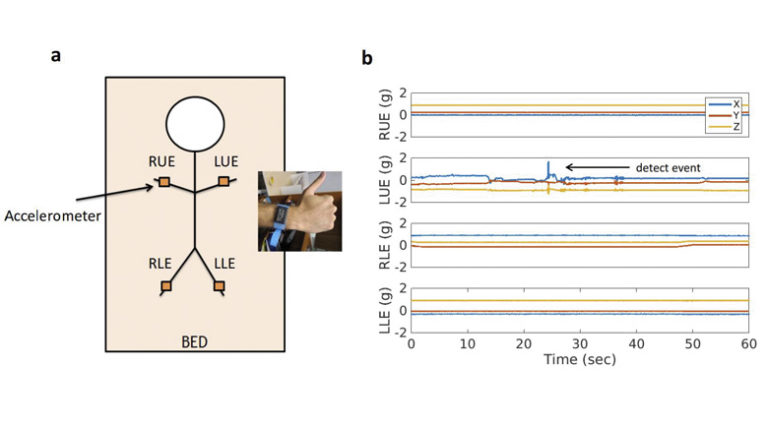
Abstract
Stroke patients are monitored hourly by physicians and nurses in an attempt to better understand their physical state. To quantify the patients’ level of mobility, hourly movement (i.e. motor) assessment scores are performed, which can be taxing and time-consuming for nurses and physicians. In this paper, we attempt to find a correlation between patient motor scores and continuous accelerometer data recorded in subjects who are unilaterally impaired due to stroke. The accelerometers were placed on both upper and lower extremities of four severely unilaterally impaired patients and their movements were recorded continuously for 7 to 14 days. Features that incorporate movement smoothness, strength, and characteristic movement patterns were extracted from the accelerometers using time-frequency analysis. Support vector classifiers were trained with the extracted features to test the ability of the long term accelerometer recordings in predicting dependent and antigravity sides, and significantly above baseline performance was obtained in most instances ( P<0.05 ). Finally, a leave-one-subject-out approach was carried out to assess the generalizability of the proposed methodology, and above baseline performance was obtained in two out of the three tested subjects. The methodology presented in this paper provides a simple, yet effective approach to perform long term motor assessment in neurocritical care patients.

